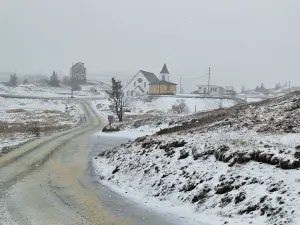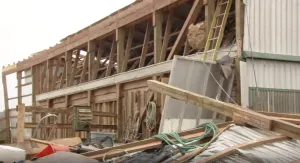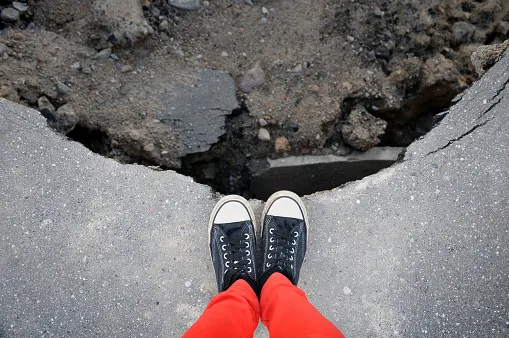
"Impossibly quiet" 100-year stretch for California quakes
It's been about one hundred years since movies entered the public consciousness, and an earthquake known as 'The Big One' hitting California has been a popular theme for movies for about as long. So it's strange to think that, for about that long, California's powerful fault lines have been puzzlingly calm -- "almost impossibly quiet", according to a new report from the U.S. Geological Survey.
Visit our Complete Guide to Spring 2019 for an in depth look at the Spring Forecast, tips to plan for it and much more
Researchers Glenn Biasi and Kate Scharer found evidence along all three of the state's major faults that major "ground-rupturing" quakes have been a regular feature of the past 1000 years, but the past 100 years has been oddly quiet.
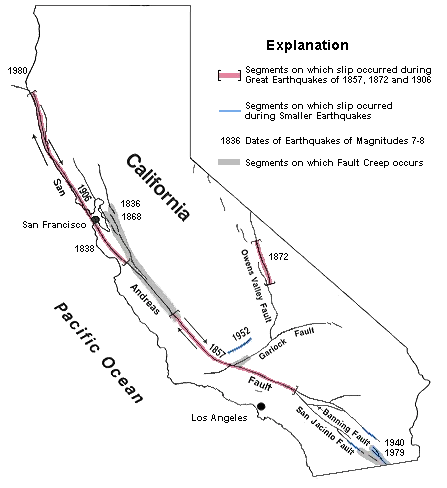
Major faults in California. Image courtesy USGS.
Speaking to the Seismological Society of America (SSA), Biasi compared the conundrum to traffic along a road. "You might say that a certain number of cars per hour is kind of representative, and then something happens and you go ten minutes of seeing no cars. If it's just ten minutes, you could say it was a statistical fluke." But when the break stretches out to an hour, or longer, you start to wonder about other causes. "[It might be] that up around the bend, there's a wreck."
Given the population growth of the past 100 years, the team thought it may have also been a data problem; that quakes occurring that weren't tracked by the data. But their study found that wasn't the case. "We're saying, no, it's not a data problem, it's not a data choice problem, it doesn't matter how you slice this," Biasi told the SSA. "We just have not had earthquakes that past records predict that we should have had."
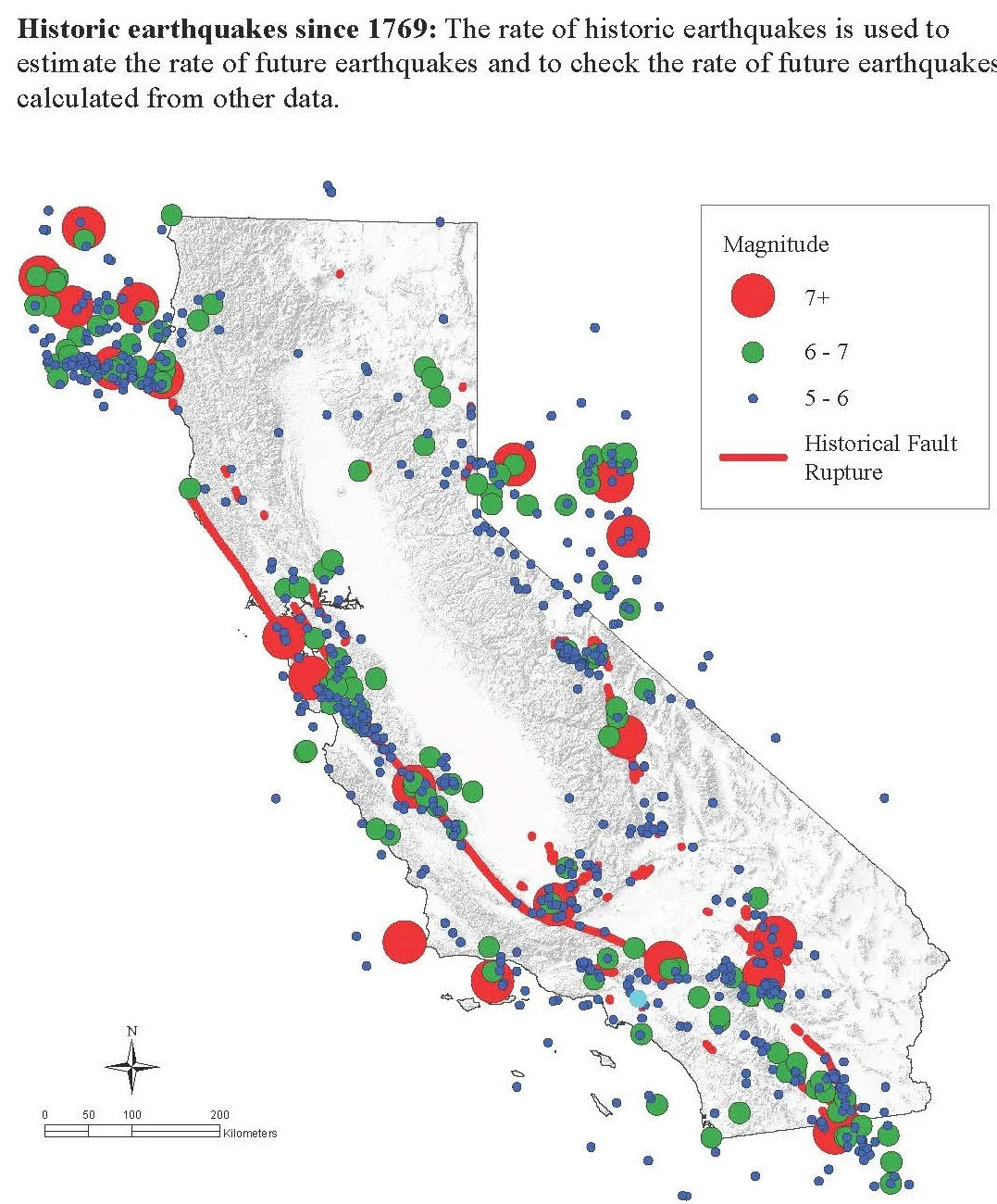
Image courtesy California Dept. of Conservation
SEE ALSO: Why this 'Big One' would be devastating for the Bay Area
Which leads to some further questions, namely, what are the odds of a 100-year gap, and what's causing it?
After combing through the seismic record for the past 1000 years, the team determined that the odds of a 100-year gap between major quakes across the three main faults -- the San Andreas, San Jacinto, and Hayward -- were very small, indeed. In fact, there's only a 0.3 per cent chance of such a quiet period occurring.
One possible explanation for the lull is that the previous 100 years, from 1800 to 1918, were extremely active, with eight major, ground-rupturing earthquakes evident in the geological record. "We had the flurry of very large earthquakes from 1800 to 1918," Biasi said. "It’s possible that among them they just wrung out—in the sense of wringing out a dishrag — a tremendous amount of energy out the system."
That means the odds are better for a more active period ahead. "If our work is correct, the next century isn’t going to be like the last one," says Biasi, "but could be more like the century that ended in 1918."
John Vidale, a seismologist from UCLA and former director of the Southern California Earthquake Center, cautions that doesn't mean that disaster is imminent. "It's not that [the odds of a quake] skyrocket," Vidale told Mashable. "The danger might be doubled — but not everything is overdue. It's not 10-months pregnant."
RELATED: Here's what makes an earthquake deadly
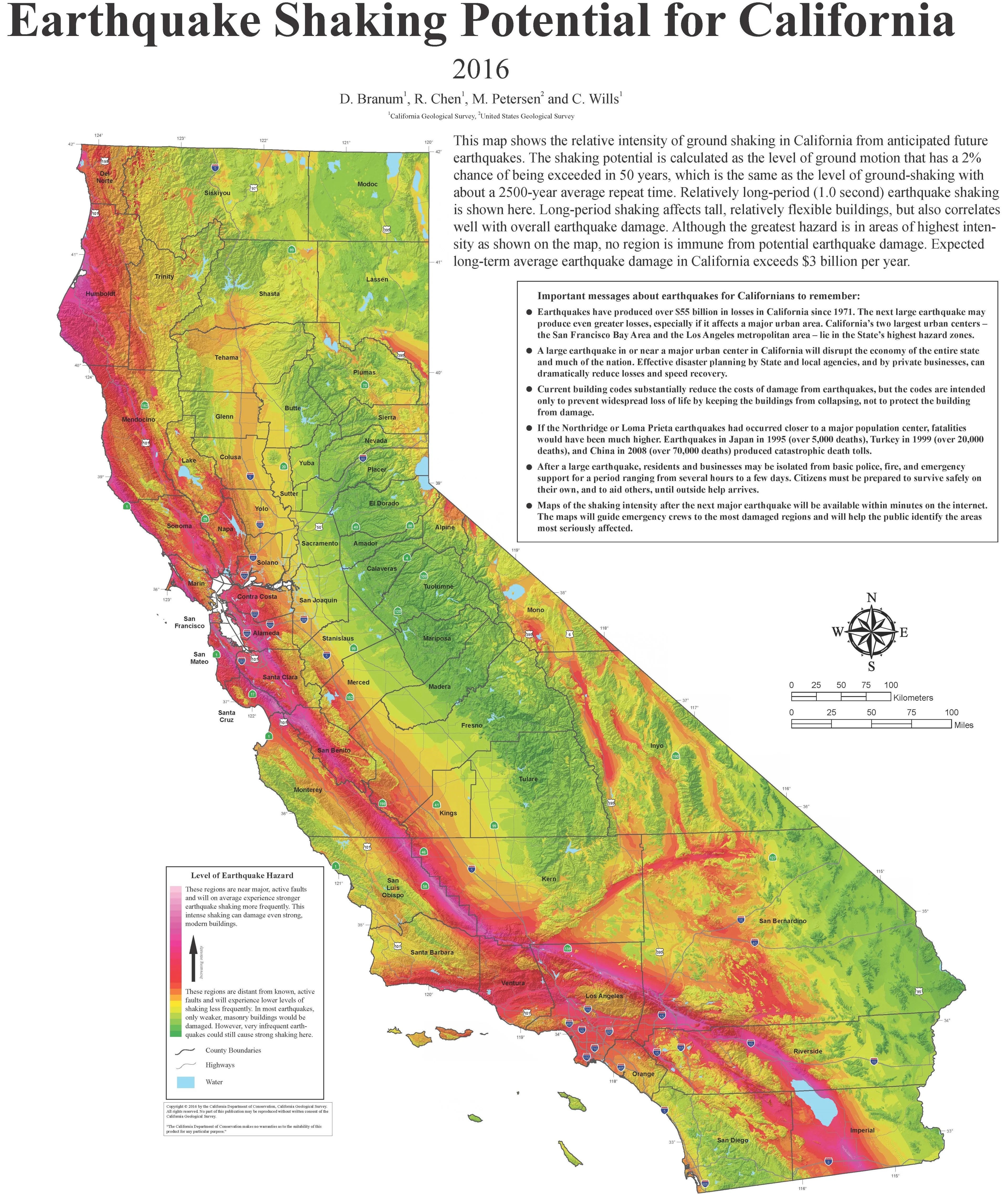
Image courtesy California Dept. of Conservation
Even so, Biasi and team would like to see more research into what's "holding up traffic", rather than trying to explain away the gap as a statistical anomaly. "Our paper confirms that this hiatus is very improbable and it's our view that our efforts will be better spent considering explanations for this, rather than trying to bend the data to make the hiatus a 'statistically improbable but could happen' kind of thing," Biasi said in the SSA release.
"We know these big faults have to carry most of the [tectonic] motion in California, and sooner or later they have to slip. The only questions are how they’re going to let go and when."
Sources: Seismological Research Letters | Seismological Society of America | Science Daily | Mashable |








